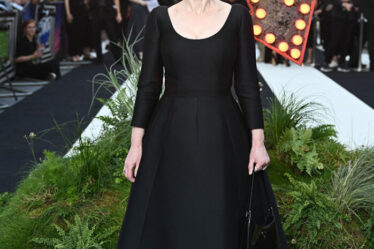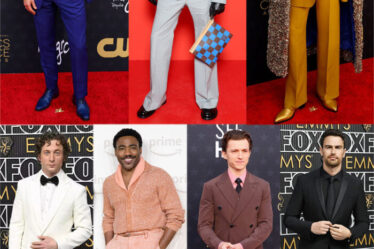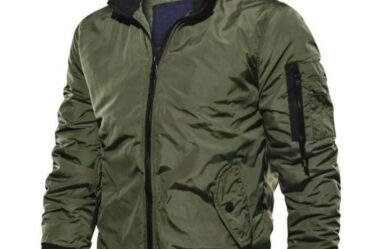
PARIS — Picture Rick Owens thirty years ago, driving down Hollywood Boulevard in his white Mercury Comet, blasting Wagner’s “Liebestod,” Marlene Dietrich’s “Lili Marlene,” “Lights” by the Sisters of Mercy. Fast forward to Thursday afternoon in Paris, Rick’s adopted home since 2003, and “Liebestod” shook the foundations of the Palais de Tokyo as the soundtrack for his new show. He called it “Hollywood,” and it was the sequel to a couple of shows he dedicated to Porterville, the small-town California he escaped for Hollywood Boulevard with all its sleazy promise of re-invention. That happened. Owens made a new world for himself. But now he’s looking back, like you do when you get older and you’re wondering who you really are, and where all the time went.
He staged the Porterville shows at home, so they were necessarily smaller and more exclusive. That ultimately made him feel bad. With the Hollywood shows – this one and the men’s show in June – Owens returned to including everyone, inviting dozens of students and faculty members from fashion schools in Paris to model, alongside staff members and friends like the formidable Allanah Starr, whom he called “one of the grande dames of the trans community in New York.” Plus, there were all the people watching from the street. “It’s been the thrill of my life to see people commit themselves so profoundly to what we do, but I think it creates an aesthetic wall sometimes, and frightens other people away. They can’t see themselves entering that fortress. So a show like this is an effort to invite everyone in. To be honest, it’s kind of a flex because who else can do that kind of thing?”
So true. Owens stands alone, as Thursday’s show proved, even if its scale, with the massed marchpast of dozens of models, tended to diffuse the energy, especially without a set piece like the human pyramid that gave June’s show its unforgettable focus. But honestly, who else would even attempt such a performance? And it also had the side benefit of giving Owens an opportunity to present many more propositions than usual. From denim cutoffs and cropped leather jackets to charmeuse hoodies and goddess gowns in grey merino knit, he demolished that aesthetic wall he was talking about. So many more ways to see yourself in Rick. “The added extra plus was that we got to consider every size in the universe in a way that we haven’t for a long time, and that was something that I’d wanted to do. But having one plus-sized girl on a runway with 45 skinny models just seemed very awkward.”
That’s not to say there wasn’t an awkwardness on Thursday’s monumental catwalk, but it was a natural thing, dozens of women who had never modelled, called upon to do their best under the gimlet stare of the world’s fashion media. It actually amplified something that Owens said in our pre-show conversation. “I think people might respond to me because I’m talking about doing my best and not getting there yet. And that’s what everybody’s doing. Everybody can relate to trying to be better.”
But Rick Owens couldn’t do a show called “Hollywood” and not also include the supernal glamour of silhouettes that evoked a long-ago golden era of the silver screen: fishtailed dresses swathed in lavish stoles of silk chiffon, denim goddess gowns painted with a crust of gold. And the capes! Who knows what reverie his models were in as they walked past so solemnly while Wagner soared on the soundtrack? Maybe they were just concentrating on not pitching over in their heels. Whatever, it felt intensely poignant to me. When I asked Owens how the glory and awfulness of the human condition impacted on his design, he’d answered, “I’m trying to do things that are a little more poignant. I love beauty but there’s always going to be a little bit of distress, a little acknowledgment of the difficulty of the human condition. There’s always going to be joy, but you have to acknowledge the sadness in life. And not succumb to it.” He’s not the philosopher king of fashion for nothing.
The sheer prettiness of Chemena Kamali’s vision for Chloe is so powerful it’s almost shocking. The impact is unexpected, like being clubbed into submission by butterfly wings. Delicate lace bloomers, fragile lace-trimmed camisoles, floating clouds of floral prints, tiers of pure white froth are images plucked from a world that is untroubled by the horrors that nibble at the edge of Rick Owens’s universe. Those florals were, for example, taken from prints made in 1977 for one of Karl Lagerfeld’s summer collections for Chloe. In the originals, they were handpainted, but Kamali said she’d printed them on bathing suits or sheer mousseline dresses, and redefined the colours – sand, lime, lavender – like they’d been faded by the sun. She wanted a feeling of the last lingering days of summer. She called it “lost and found.” “Pieces that feel like they’ve lived for a very long time, other pieces that are maybe more from today, a spontaneous way of putting a silhouette together.”

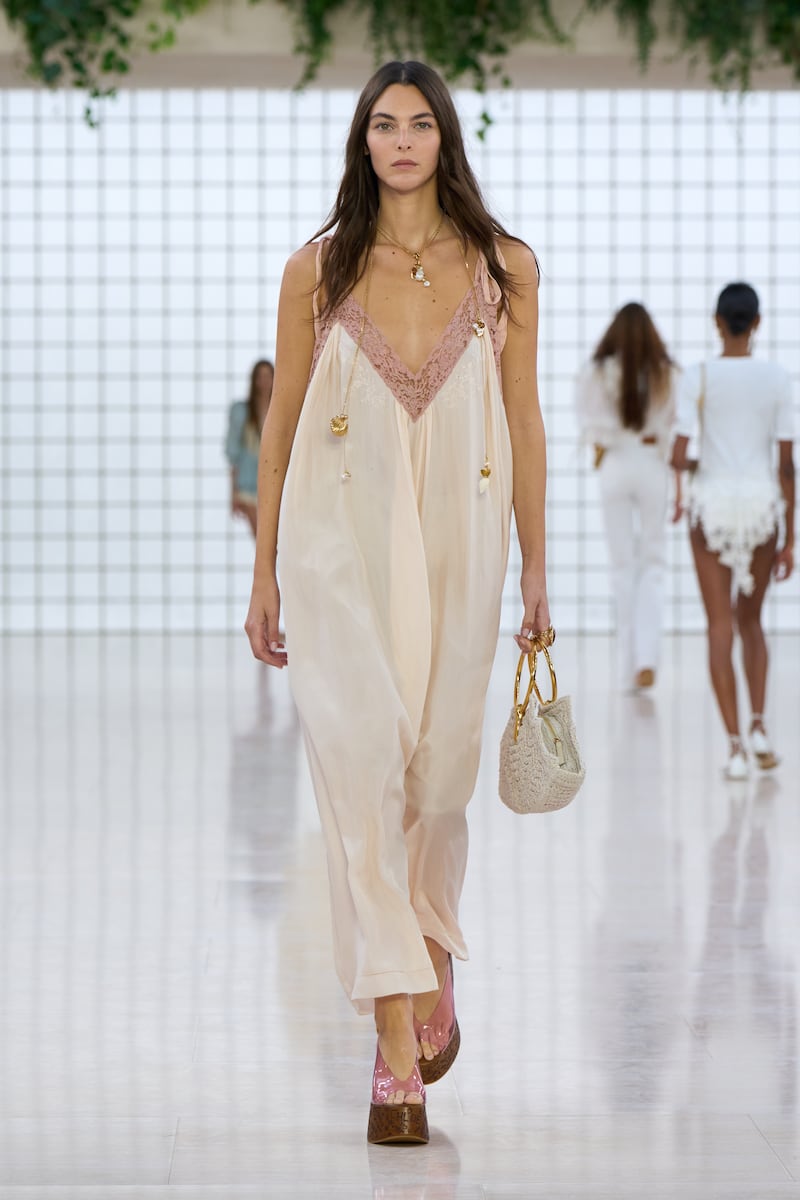
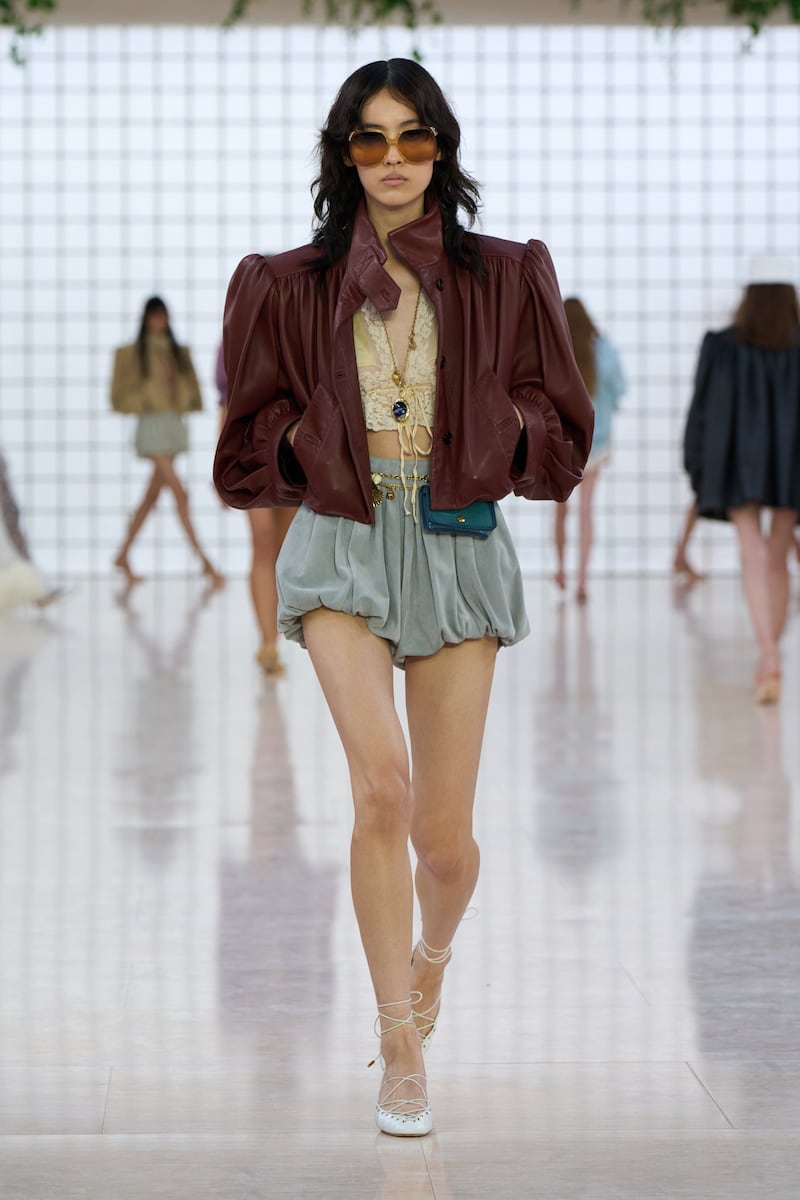
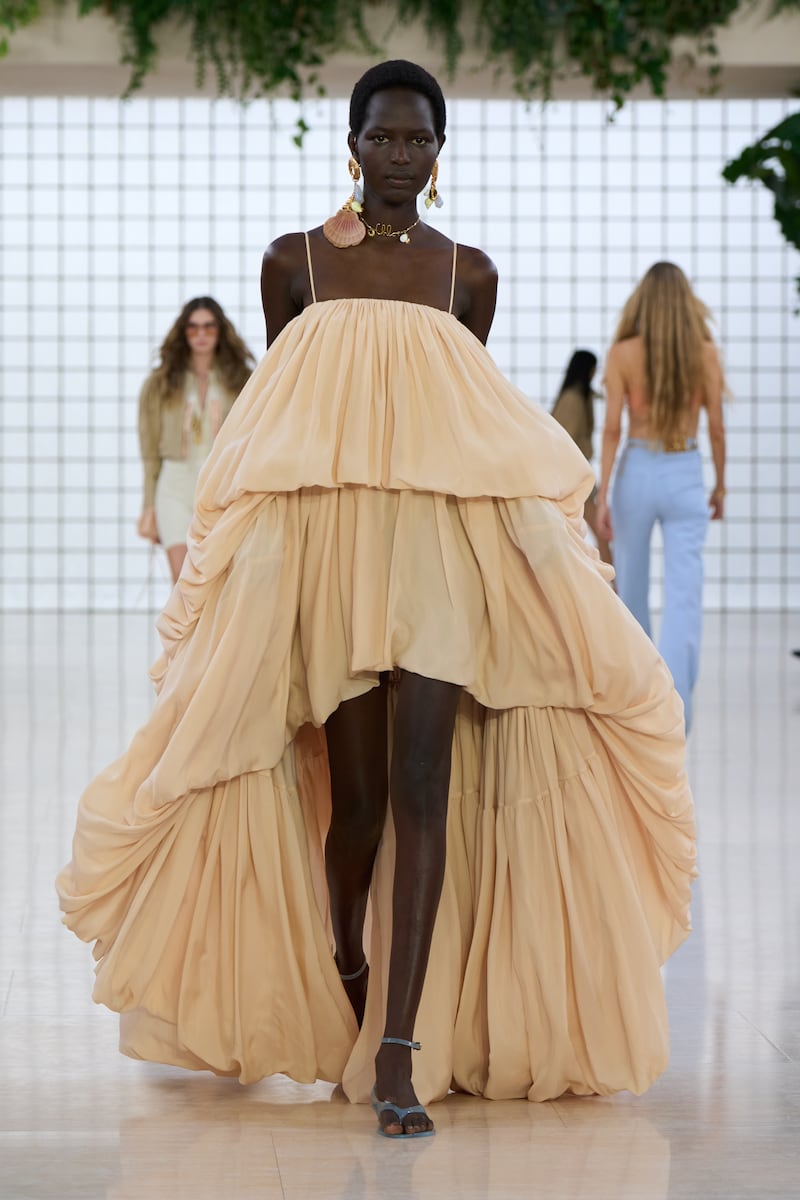

It was a fantasy, but Kamali insisted that her design process involved a rigorous interrogation. “In fittings, we ask ourselves, Would we wear it? How does it feel today? One of the most important things is that you believe this girl walking down the street like that.” Well, do you? The Chloe girl has always been a kind of feminine incarnate, from Lagerfeld’s twisted romance to the variants on Glastonbury Babe that most of his successors offered, but Kamali has elevated the ideal to an uncompromising degree. What’s peculiar is how little edge there is in her vision. After all, every rose has its thorn. Post-show, she sensibly pointed out that, two collections in, this was only the beginning. The first collection cleaned the slate, built a foundation. The second has been an opportunity to delve deeper into an archive which transects a whole lot of attitude. By way of example, Kamali offered the billowing taffeta balloon dress which she’d extracted from a 1978 collection. From that one look sprang the bloomer silhouette that shaped her own collection.
But then there were broad-shouldered jackets with a swinging back that were structured enough to look like something from the 1940s, viewed through the 80s. Kamali said they were inspired by the classic Chloe crepe de chine blouse, with its yoke and gathers and drapey sleeves. That was a promising extemporisation on a historical reference. There were also little puff-sleeved, square-necklined jackets that she claimed were turn of the century (the one before the last one). She imagined a woman picking up an item like that in a flea market, and accessorising it with a lingerie top and a pair of high-waisted jeans. Presto! Liisa Winkler on the catwalk. Mixing a bit of nostalgia with today and making it your own: the Kamali formula. There were so many Chloe girls in the front row that she’ll clearly have plenty of takers.

